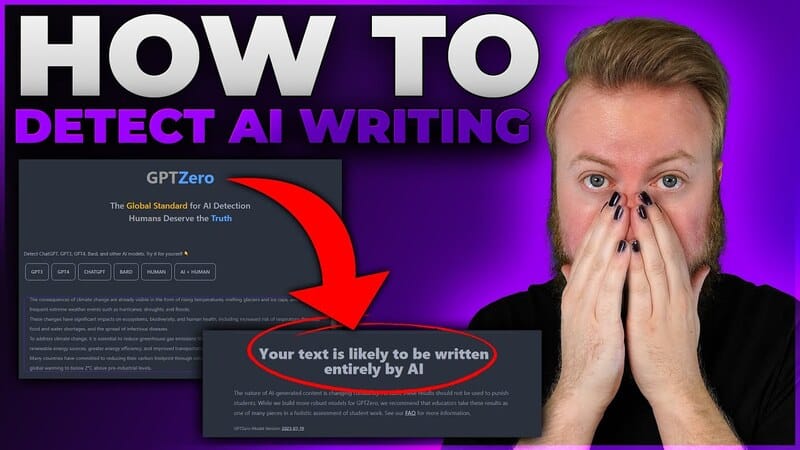When employing an AI Written Detector, stay away from these common mistakes. Learn about the ten worst mistakes you should avoid and how to make sure your AI content detection methods are as accurate, credible, and trustworthy as possible.
AI is changing the way we make, use, and judge content. But with this change comes a new problem: identifying the difference between writing produced by people and text authored by machines. What is the answer? Here comes the AI Written Detector. These technologies are meant to find AI-generated content, but they don’t always work. Using them wrong might really lead to bad results, missed chances, and even damage to your reputation.
This tutorial will help you avoid the frequent mistakes that people make when using an AI Written Detector, whether you’re an editor, teacher, or digital marketer.

1. Too Much Dependence on One AI Written Detector
It’s a bad idea to use just one AI Written Detector and call it a day. Different algorithms, training data, and thresholds are used by each detection tool. If you only use one tool, you can get a false positive or overlook AI content that was made in a subtle way.
How to Fix It:
Always utilise more than one detector. Cross-checking results makes them more accurate and lowers the chance of making mistakes. It’s like peer-reviewing stuff through different AI “lenses.”
2. Not paying attention to the AI Written Detector’s Confidence Score
A confidence score or percentage shows how sure the AI Written Detector is about its assessment. A lot of people don’t pay attention to this metric and only look at the binary result: “AI” or “Human.”
Why It Matters:
A 60% chance of AI is considerably different from a 98% chance. If you understand this difference, you can make decisions based on more than just black-and-white results.
3. AI Written Detector: Understanding the Limitations of Detection Algorithms
AI detectors typically have trouble handling hybrid content, which is text that was created by a person and then changed or made by AI. People don’t understand this grey area very well when it comes to these instruments.
A blog post that has been lightly updated by AI might still be detected, while AI content that is poorly written might not be. It’s important to look at the results in context and remember that no AI Written Detector is perfect.
4. Using AI Written Detectors on Content That Isn’t Well Formatted Formatting is important
The AI Written Detector might not give you the right findings if you’re evaluating a block of text with broken paragraphs, grammatical mistakes, or that you copied and pasted from PDFs.
Best Way:
Make your content clean. Make sure the formatting is correct and delete any hidden characters or metadata. The AI detection tool can look at linguistic patterns better when the text is well-organised.
5. AI Written Detector: Why Not All AI-Generated Content Is Bad
To be clear, not all content made by AI is bad or unethical. People don’t trust AI writing tools because of the stigma around them, although in a lot of circumstances, these tools help people write material in an ethical way.
Point of view: Don’t use an AI Written Detector as a witch hunt; use it as a quality control check. Many professionals utilise AI in a responsible way, and algorithmic flagging can unfairly punish them.
6. AI Written Detector: The Risks of Ignoring Updates and Tool Improvements
AI changes quite quickly. The tools that find it should, too. A lot of people still utilise old versions of detection technologies, which makes their judgements wrong.
Tip: Always use the most recent version of the AI Written Detector you like best. Developers often improve their models by using new AI technology and input from real-world use cases.
7. AI Written Detector: Why False Positives Shouldn’t Be Seen as Proof of Dishonesty
Just because your tool made a mistake, you could inform a kid they cheated when they didn’t. That’s the danger of accepting AI detection results as definitive decisions.
Answer:
analyse questionable results by hand, analyse the metadata, and do a stylistic analysis. Don’t take AI Written Detector results as the last word.
8. AI Written Detector: Why Human Review Is Essential in the Detection Process
AI can only do so much. If you trust it without any human scrutiny, you’ll make bad decisions and ignore important information.
What You Should Do:
After using an AI Written Detector to scan information, read it over yourself. Does it fit with what the person has written in the past? Are there rapid shifts in tone, difficulty, or layout? There is no substitute for human wisdom.
9. AI Written Detector: How Training Data Influences Detection Accuracy
A lot of detectors are trained mostly on English-language content or certain types of writing, such academic writing. When you use them for creative writing or content in more than one language, they don’t work as well.
Choose a detector that fits the context of your material, as this is what we recommend. Check if your AI Written Detector can handle technical documents or poetry without any prejudice, for instance.
10. AI Written Detector: The Risks of Keeping Users in the Dark About How Detection Works
Being open is very important. If you’re an editor, professor, or content auditor, you should let people know if you’re employing an AI Written Detector to check their work.
Why It’s Right:
It helps people trust each other and talk about AI’s involvement in making content. Letting users know about things makes both sides responsible and helps people understand AI technologies instead of hating them.

How to Pick the Right AI Written Detector
Not all tools are the same. When choosing the best AI Written Detector, think about:
- Benchmarks for accuracy and testing: Check to see if the tools you want to use have been peer-reviewed or published with validation metrics.
- Speed and Ease of Use: A good tool should be quick, easy to understand, and easy to use.
- Algorithms that are clear: The more clear the model is, the easier it is to tell how trustworthy it is.
Using an AI Written Detector to Make Your Workflow Better
To get the most out of these tools, you should:
- Use them early on in your content review process.
- Teach your staff or team how to correctly read the results.
- Don’t use outcomes as weapons; use them to get helpful criticism.
Keep in mind that the purpose is to improve the quality of the content, not to have AI watch over it.
Last Thoughts on the AI-Written Detector Problem
It’s clear that AI will become more common in content creation, but how we find it will determine how credible we are. Using an AI Written Detector the wrong way can make things more confusing than clear. Knowing its pros MEME,chapters, limitations, and moral implications can help you make better, more fair choices.
Always use technology with common sense, and use these tools responsibly. Behind any great detection approach should be an even greater goal: honesty, trust, and openness.
To stay updated on the latest AI developments and tool reviews, follow us on our social media channels:
- YouTube: https://youtube.com/@AItoolsbiz
- Twitter: https://x.com/AItoolsbiz
- LinkedIn: https://www.linkedin.com/in/aitoolsbiz








